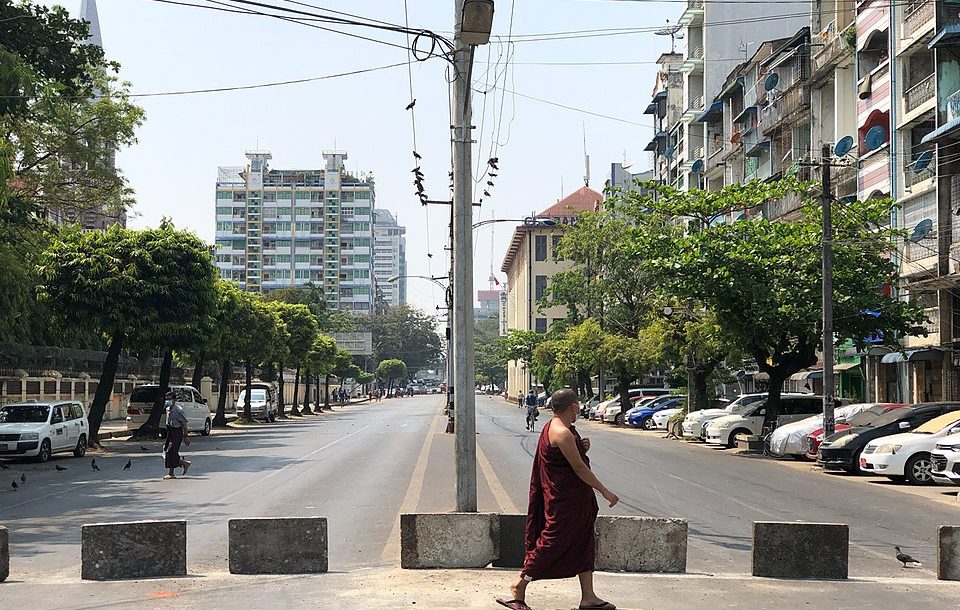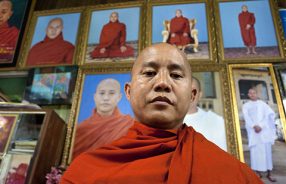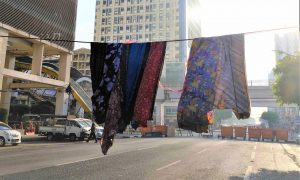Parmaukkha, a Burmese monk known for his ultra-nationalist stance, commented that Burmese “who can think about the future will not protest against the current [junta] government”. He justified his statement on the premise that the Aung San Suu Kyi led National League for Democracy (NLD) is a grave threat to Buddhism and ethnic Bamar. The reaction among the Buddhist sangha (Buddhist monastic order) in Myanmar towards the February coup is, however, far from uniform.
The abbot of Mingyi monastery in Mandalay, Myawaddy Sayadaw, was detained just days after the coup on 1st February. He is one of the fiercest critics of the military junta and in the months since his arrest, several other monasteries have been raided with the junta targeting monks who led anti-coup protests. Other monks arrested include Thaw Pa Ka. Interestingly, both Thaw and Myawaddy participated in the 2007 Saffron Revolution, when monks took to the streets in droves and led protests to express disapproval of the withdrawal of a fuel subsidy, a measure which resulted in a rise in the price of food and daily necessities. Although the protest movement involved other groups such as veterans of the 88 Generation, monks became the face of the protests when they overturned their alms bowls, indicating that they were spurning donations from the military junta and therefore undermining its political and moral legitimacy.
The relationship between the monks and the military however, has changed significantly since Saffron Revolution. A sizeable number of monks who participated in the Saffron Revolution have been imprisoned or sent into exile, with the sangha in a much weakened state to stage another round of anti-military protest. Buddhist nationalism has occupied a more central place in the sangha than it did a decade ago, due to the perceived threat from Islam in Rakhine and other parts of Myanmar.
In the interest of livelihood
Historically, Buddhism in Myanmar has been entwined with the discourse on governance and legitimacy. In the pre-colonial era, the Burmese monarchy had an interdependent relationship with the sangha. The sangha would bestow moral legitimacy on the King, in exchange for the latter serving as the patron and defender of the Buddhist faith. Should the King be perceived as failing to fulfil his duties, the sangha would cease to offer moral and political legitimacy. Even though the monarchy was eliminated during colonial rule, the framework for legitimacy has remained largely intact. The sangha continues to expect the incumbent regime—regardless of whether it was elected or otherwise—to champion Buddhist beliefs. As the sangha lost its patron with the dismantling of Burmese monarchy during the British colonial rule, monks became dependent upon ordinary, predominantly Buddhist Bamar populations for alms-giving and temple donations. Consequently, monks became reliant on the well-being of the community and furthermore, their position as spiritual leaders made them highly involved in and concerned with the plight of ordinary Bamar and Buddhists. Several monks also act as community leaders as they run organizations which do charity and social work for struggling members of the society, leading to their participation in social protest movements over the years.
Rise of Buddhist nationalism
In the most recent decade, closer ties between certain Buddhist ultran-ationalist organisations and the military have emerged, due to both groups being wary of perceived “Islamic threats”. Several ultra-nationalist groups led by monks have formed in the past decade. Exploiting rising tensions between the Muslim Rohingya and Buddhists in Rakhine, these groups justified their hard-line political stance of majoritarianism and exclusivity under the pretext of protecting and preserving the Buddhist sāsana against external threats. In turn, these groups explicitly support the military, which adopted violent measures against the Rohingya.
Ma Ba Tha could derail the country’s political transition, writes Oren Samet.
The threat of Myanmar’s extremist monks
Another development since the 2007 revolution is that the relationship between the military and ultra-nationalist groups has become increasingly close and public. Portraying itself as an active defender of Buddhist faith in recent years, the military has donated generously to monasteries and Buddhist organisations, including groups whose members have been charged with sedition. When General That Pon came under fire for donating USD $20,000 to Buddha Dhamma Prahita Foundation ( successor of the MaBaTha), he defended himself by saying that he was simply donating to monks for charity, implying he was acting in the interests of the Buddhist faith. Such acts illustrate the military’s tacit backing for these radical monks and their symbiotic relationship.
Present predicament
The competing demands to both secure the livelihoods of Burmese through ending the violence, but also to defend the Buddhist faith against the perceived Islamic threats by supporting the military, leads to the present scenario of divergent responses within the sangha. In the recent coup, the split within the sangha is more evident than ever. On 17 March the Sangha Maha Nayaka Committee (MaHaNa) released a statement condemning the military’s violence during protests, signaling a rift between the military and the government-appointed body that oversees the sangha. On the other hand, monks supporting the military were reported to have used slingshots to attack anti-coup protestors on 10th March. Independently, monks all over Myanmar have also taken action to intervene and prevent bloodshed by joining the protests and organising prayers.
With the military acknowledging that a lack of support from monks may lower the morale of their rank and file, a stronger anti-coup message from Burmese monks still has the potential to weaken the military junta’s legitimacy.
 Facebook
Facebook  Twitter
Twitter  Soundcloud
Soundcloud  Youtube
Youtube  Rss
Rss 



